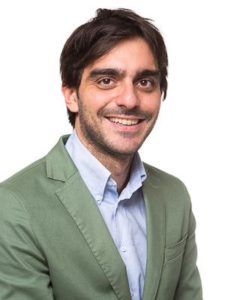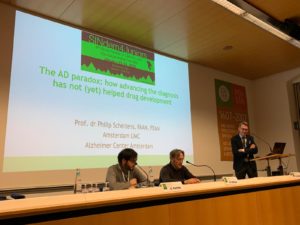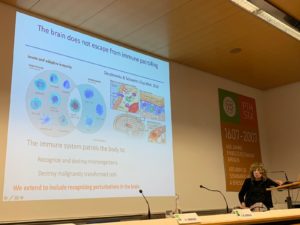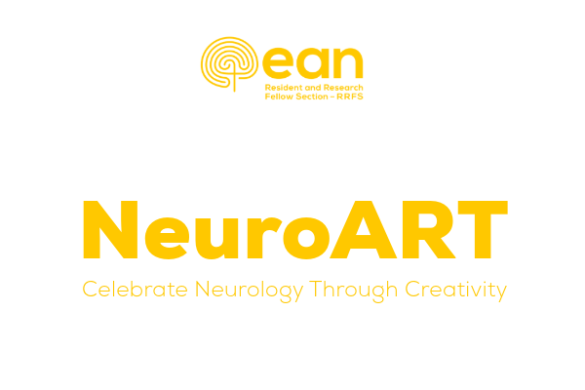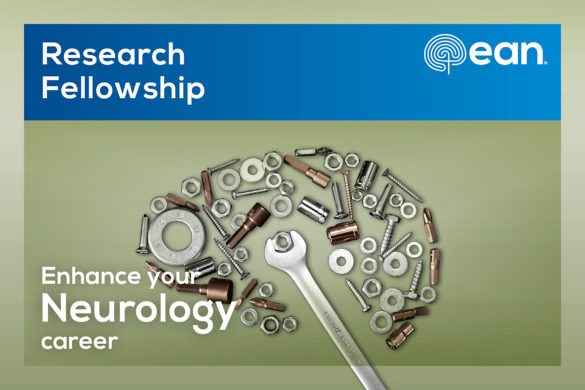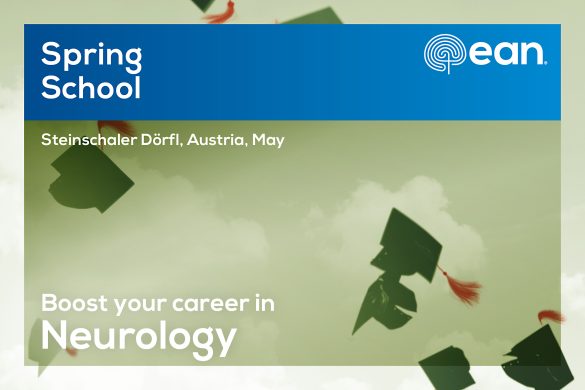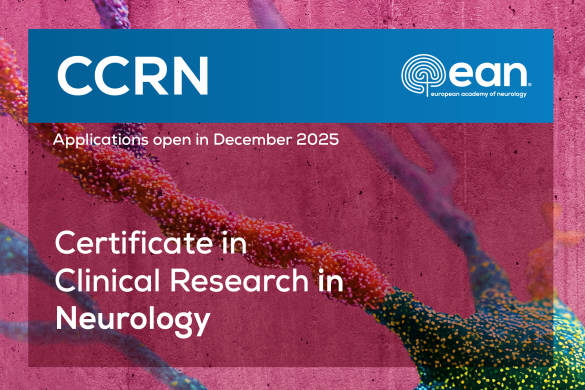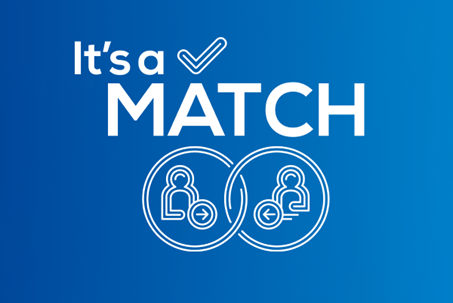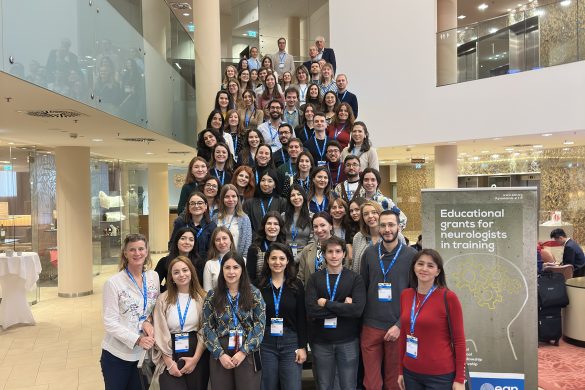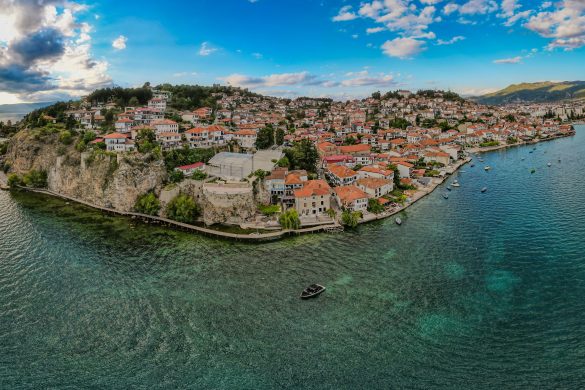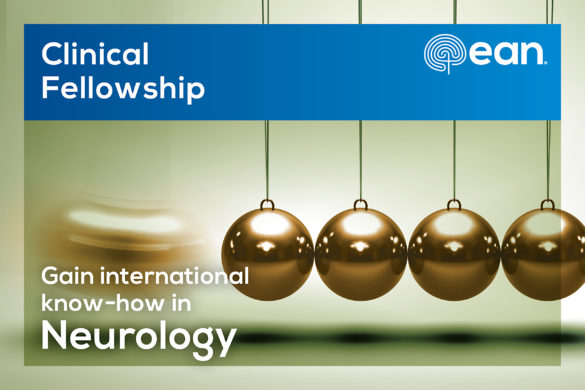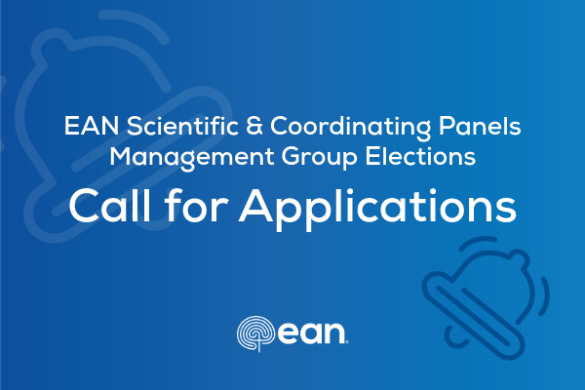Francesco Di Lorenzo
RRFS
This year the eight edition of the conference entitled “Recent Advances in Clinical and Experimental Research on Dementia and Neurodegenerative Disorders” was held as usual in Bressanone, Italy. The event, which took place from 22 to 24 January, represents an interesting and unique event in the Italian academic calendar, starting from the choice to use English as the official language, and attracted a high calibre of speakers.
This congress, sponsored by SINdem (Italian Neurology Society devoted to the study of dementias), is addressed to a young audience (aged under 40 years) represented by neurology (or other medical branches) specialists, neuropsychologists, biologists and all young researchers in the field of neurodegenerative diseases.
The official language of the event is English, because many speakers are from outside Italy, but also as a spur for young participants who present scientific contributions to use and master what is the official language on a scientific level. Moreover, the conference is open also for non-Italian participants.
The congress started, as per tradition, with the Contamination Session whose purpose is to broaden the scientific horizons of the audience, in which four reports on “hot” and recent discoveries in the world of neuroscience are presented, often not confined to the world of dementia / neurodegeneration. This year we started with amazing talks about the breakthrough epigenetic concept of genetic transfer of different forms of behaviours (Dr. Aviram, Tel Aviv), and the use of non-invasive brain stimulation techniques to “hack” brain functions (Prof. Sommer, Gottingen). Then Prof. Nelson (Kentucky, USA) described recent advances in the diagnosis of LATE (Limbic-predominant age-related TDP-43 encephalopathy), highlighting the importance of matching pathological and epidemiological data. Lastly, we were honoured that Prof. Michal Schwartz (Israel), one of the pioneers of the role of immune cells in repair and neurogenesis in the field of neuroscience, especially in Alzheimer`s Disease, presented recent data. She described targeting approaches to specific immune checkpoints, and how this could lead to modification of common factors that go awry in AD and dementia, and thus potentially provide an immunotherapy to help combat these diseases.
The following morning was occupied by an interesting experimental session carried out with the congress participants part of the research. The role of spatial and verbal memory in a dual interference task was investigated. This included an outdoor and an indoor session, and included an orienteering test on the streets of Bressanone.
Advanced neurophysiological methods played an important role during Thursday`s symposia, in particular magnetoencephalography (MEG) to non-invasively detect cortical activity (Dr. Sorrentino, Marseille), and transcranial alternate current stimulation (tACS) to synchronise brain rhythms in specific cognitive tasks (Dr. Violante, Surrey).
On Thursday evening, Prof. Scheltens, a world-renowned expert, gave a terrific lesson on the latest criteria for Alzheimer’s disease and the road to building good clinical trials. The lively debate that followed enabled the young congress participants to ask many questions of clinical relevance directly to one of the authors of the criteria for classifying Alzheimer’s disease.
On the last day, the morning symposium was about the latest advances in alpha-synucleinopathies. Prof. Zanusso (Verona, Italy) showed us interesting results of RT-Quick for detection of alpha-synuclein protein through a remarkable nasal mucosa brushing technique.
The afternoon sessions focussed firstly on recent gene-silencing techniques for Huntington’s disease therapy (the topic of intense coverage in the press over the last year) by Dr. Edward Wild (UCL, UK), who hosted a brilliant talk giving us the opportunity to see the promising results of this new clinical trial. Then we had the opportunity to hear from Prof. MacPherson (Edinburgh) about the recent advances in the role and importance of social cognition in neurodegenerative diseases. The last session of the meeting hosted Dr. Rasmussen (Copenhagen) who presented amazing data on the role of the glymphatic system in physiological and pathological conditions including neurodegenerative diseases.
As can be seen, the strong point of this conference is certainly the scientific program, with interesting and stimulating topics ranging from the latest clinical / experimental breakthroughs to future challenges in the world of research. There was also a lot of room for discussion, stimulating the audience to participate in debate. Finally, this meeting, organised “by the young for the young”, creates a cosy and friendly social environment, with lots of opportunities for networking (from skiing to the local bars).
The dates for next year’s meeting are 20-22 January 2021 and updates on this congress will be on social media (details below), as well as pictures and videos of the speakers and other social activities from this year’s event. We encourage participation from other European fellows.
See you next year in Bressanone.
Twitter: SINdem4juniors (@SINdem4j)
Facebook: Sindem4juniors
Website: www.sindem4juniors.it

